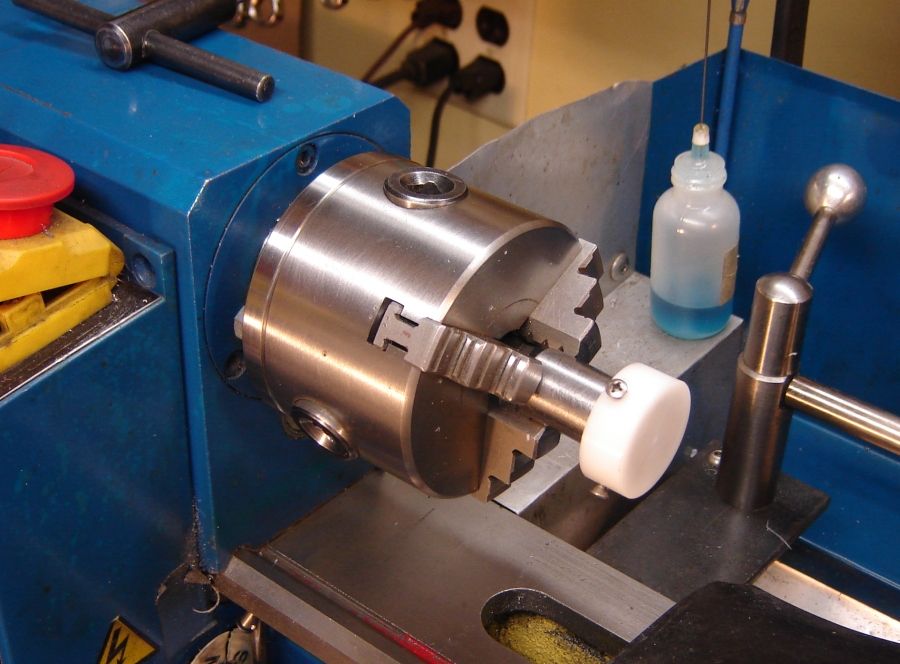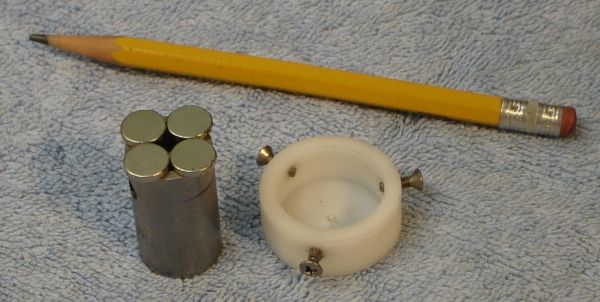
* GadgetBuilder.com * © 2012 by John Moran
Last Modified:
Demagnetizer in place, click to enlarge
Small items in my shop magically become magnetized which makes swarf cling to them. This is a nuisance, especially on calipers where chips can cause an error in measurement.
Demagnetizers work by reversing the magnetic field in an item repeatedly while slowly reducing the field strength. The residual field is smaller than the magnetizing force at each reversal so the residual field in the item slowly decreases. In this design, the item to be demagnetized is slowly moved away from the magnets to reduce the field strength.

As usual, most of the needed pieces were found in my junk box - a piece of 3/4" steel tube 1.2" long (with a 1/2" center hole) being the main ingredient. Four 1cm neodymium magnets were stuck to one end (5/16" magnets should substitute nicely). The poles must alternate N/S/N/S -- done correctly they cling together as shown; they'll repel if you try to do this wrong. Suitable magnets are available inexpensively from Harbor Freight or eBay. The steel tube keeps the magnetic field confined so the other end of the tube doesn't magnetize the chuck. The plastic cover is 1.25" nylon or Delrin about 1/2" long. It is bored out to allow the magnets to enter. Depth is adjusted so the end is about 0.030" to 0.050" thick; thinner provides more magnetic force to overcome magnetism in parts being demagnetized. I used 4-40 screws to hold the plastic cover in place against the magnets.
To use the demagnetizer, put it in the chuck as shown and set the speed to a modest value, say 600 RPM. Bring the item to be demagnetized up to the flat end - the magnets will grab at it when it gets close so be careful that it isn't snatched out of your hand or banged against the end of the demagnetizer. With the item against the flat end, slowly slide it radially across the end of the demagnetizer (you'll feel the pulsation of field reversals) and then slowly away until it is clear by several inches. Items like caliper jaws are done in one pass, thicker items may need several passes. This gadget is for small items like screwdrivers, Allen keys, swarf hooks, caliper jaws, etc. -- larger items would need larger, more powerful magnets. Adding a 1/4" section on the chuck end would allow operating it in the drill press rather than the lathe.
While the chuck end doesn't attract swarf, the plastic covered end is strongly magnetic so use common sense when storing it between uses.
If you have a comment on this site or its contents,
click here scroll down and click again.